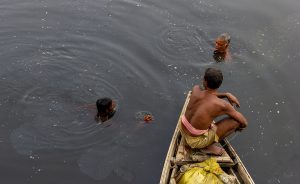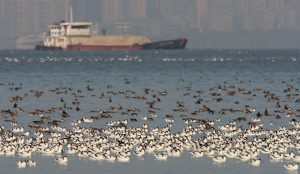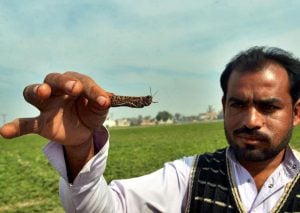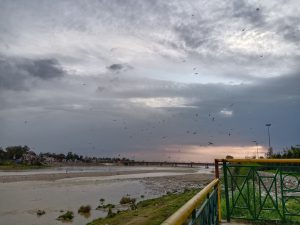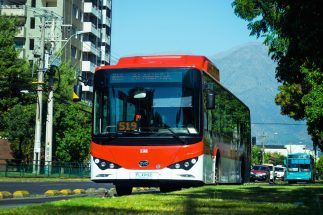In the wake of the Covid-19 pandemic, Bhutan initially banned food imports. The ban was soon lifted as officials realised it was unfeasible. But with the closure of Bhutan’s borders with India, the country’s food imports have plummeted. A combination of a shortage of labour to handle the goods, as well as the difficulty of sterilising food products, has meant that imports have slowed to a trickle.
The initial closure of the border on March 24, 2020, led to widespread panic buying. The government has since reassured people that the country has enough food stocks to last another six months. Nevertheless, the border closures and limited food supplies have focussed the country’s attention on food self-sufficiency. To add piquancy to the situation, the Bhutanese national dish is ema datse (chillies and cheese), and with chillies unavailable, it is off the table for many.
We take the Covid-19 pandemic as a blessing in disguise and the pandemic had called for a test of sustainability.Yeshey Penjor, Bhutan’s Minister for Agriculture
Replying to questions by thethirdpole.net, Yeshey Penjor, Bhutan’s Minister for Agriculture, said, the “lockdown in India and the closure of border gates with India has given our farmers the opportunity to substitute a large portion of the country’s vegetable and meat requirement that are imported from India… We take the Covid-19 pandemic as a blessing in disguise and the pandemic had called for a test of sustainability.”
In a press briefing at end of March, Bhutan’s Prime Minister Lotay Tshering reiterated this point. “If we can give agriculture one earnest push today, we will see that many of our biggest problems have gone away. We will wake up to see that suddenly unemployment is no longer a national issue. And we have enough to feed ourselves.”
On March 22, two days before the ban on food imports, the agriculture minister wrote to heads of all 20 districts of the country, asking them to coordinate with agricultural and livestock officials to support farmers to increase food production.
“I urge our farmers to produce as much as possible without worrying about the market,” Penjor said. In reply to queries by thethirdpole.net, he wrote, “To motivate farmers, we have talked with [the] Prime Minister to start with the cottage and small industry (CSI) bank, which would provide loans at the minimum or zero interest rates… [for] land resurfacing and development support and direct inputs such as seeds, electric fences and technical support.”
Food imports from India
Despite decades of plans to promote self-sufficiency, Bhutan remains critically dependent on food imports from India for its increasingly prosperous population. Agricultural production has gone up in recent years, but imports, especially of meat, have remained steadily high. “The import of meat and vegetables has not seen any significant decrease over the years despite the government emphasising on self-sufficiency,” Penjor said. Most of the vegetables imported by Bhutan are grown in and around Falakata, in the Indian state of West Bengal across the border town Phuentsholing.
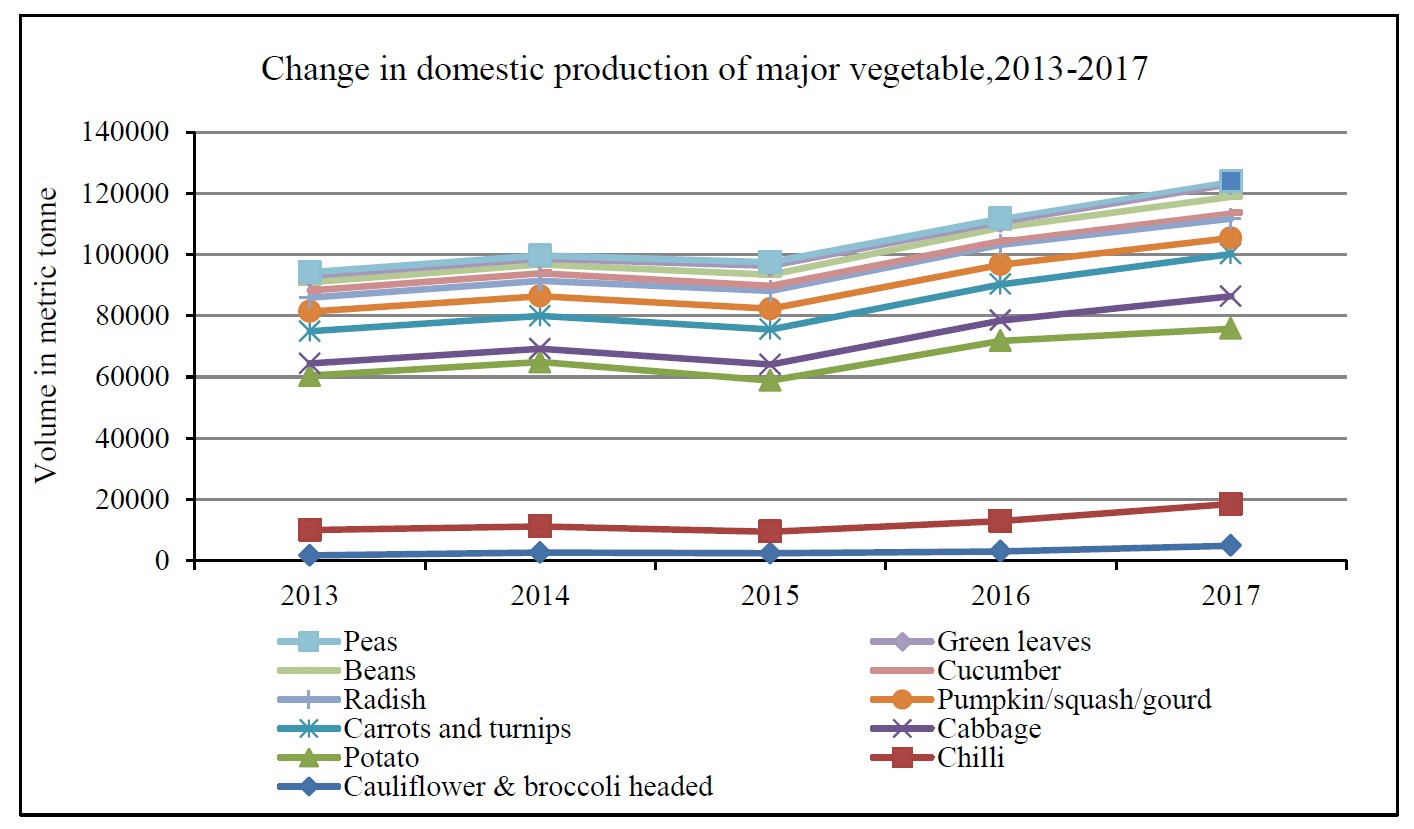

According to statistics from the Ministry of Agriculture and Forests, the issue is less to do with vegetables than meat. Bhutan has steadily increased its production of vegetables, and only about 10% or less of its vegetables are imported. This is not the case with meats. Despite a ramping up of production, chicken import and production was basically the same in 2018. Pork imported was twice the amount as that produced, and beef and yak combined were less than 20% of the amount of bovine meat imported.
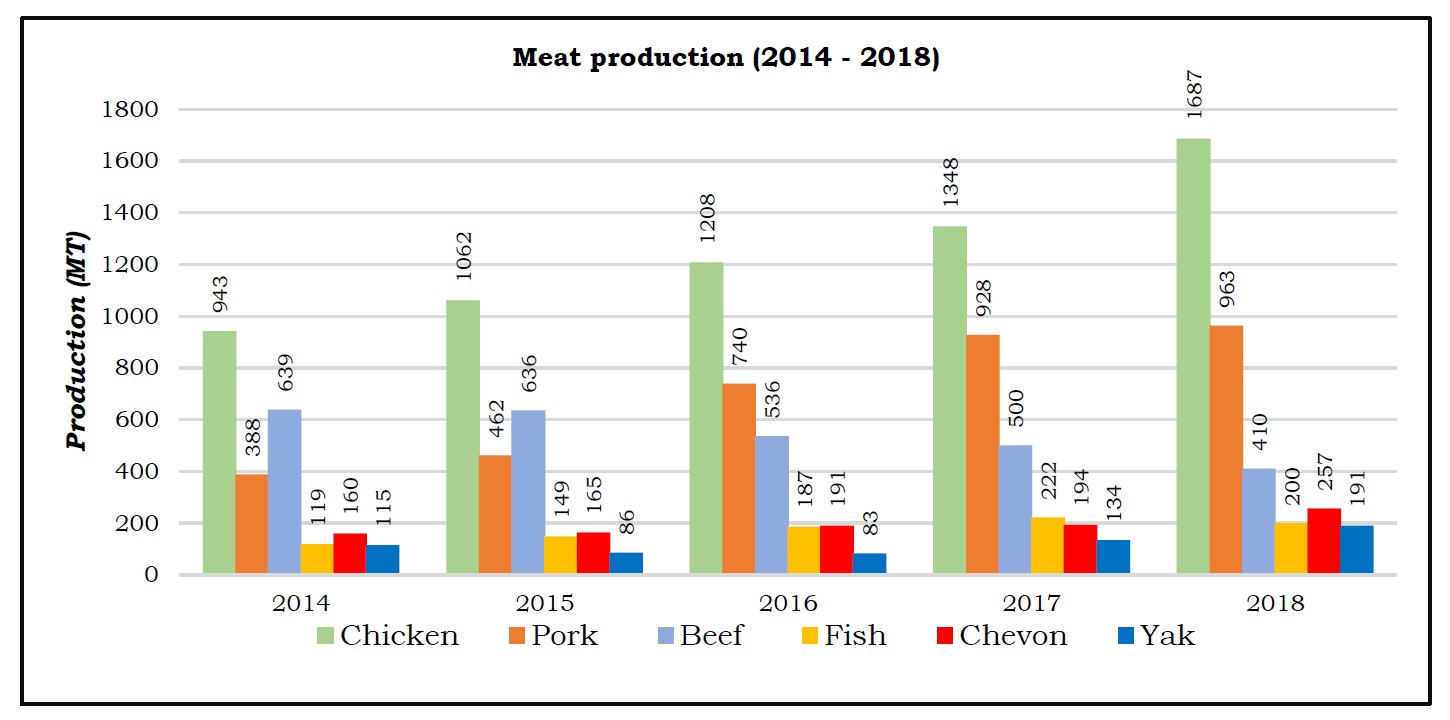
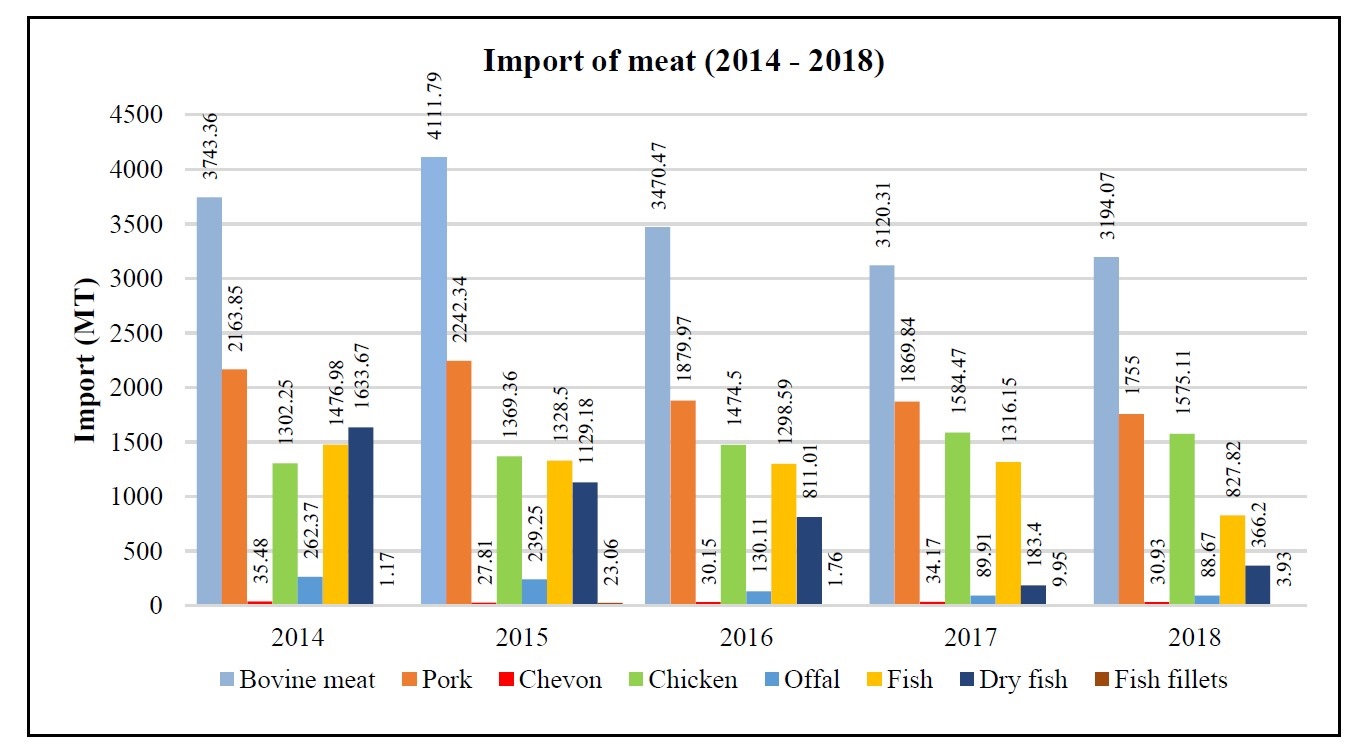
Meat products are “luxuries” in a country moving out of a subsistence economy, so this represents both middle class and aspirational consumption. Added to this, high-end tourism is Bhutan’s second biggest foreign exchange earner after the sale of hydropower, and food imports are essential to cater to tourists’ needs. How Bhutan will manage to deal with this remains unclear, as most of the initiatives mentioned relate to grain and vegetables rather than meat production.
The challenges facing Bhutan
Opposition spokesperson Dorji Wangdi said the recent directives from the government to encourage farmers in all districts to increase food production could be a small but significant step that has been long overdue. “We make investments of billions of ngultrums in all sectors except in agriculture. This is compounded by the misguided policy of acquiring prime agricultural land for urban expansion.”
“Given the geopolitical situation [of a small country between India and China] in our region, investment in agriculture must be seen as an opportunity. Agriculture is an integral part of our culture, the foundation that supported the claims that Bhutan has always been an independent nation,” Dorji Wangdi said, adding that Bhutan can learn and do better than Falakata or the state of Sikkim in India, areas which share similar climatic conditions.
The leader of the opposition, Pema Gyemtsho, said that the government should push agriculture to the top of the national agenda. It is a sector that employs 65% of the population and makes up 20% of the country’s GDP. “The investment arm of the government, DHI (Druk Holding and Investments), must incorporate agriculture as an important avenue to strengthen Bhutan in the next decade.” The DHI’s investment in a dairy plant in Chenary in Trashigang was a good example of the path to take, he said.
However, farmers say lack of irrigation facilities, connectivity and access to markets are big challenges. Also, in the absence of proper storage facilities, farmers are forced to sell their produce at the earliest opportunity, irrespective of market prices.
Apart from the Covid-19 pandemic, more climate change is putting growing pressure on the region’s farmers. Erratic weather patterns have led to droughts and floods across the region, wreaking havoc on farmers. Recently, hailstorms and strong winds damaged crops in Goshing, in Zhemgang district of southern Bhutan close to the border with Assam. This destroyed crops only over a few acres, but was a huge loss for smallholder farmers, who are the overwhelming majority of farmers in the country.
What’s next?
The minister for agriculture suggested that radical steps could be taken to make Bhutan self-sufficient, such as the gradual reduction of some goods now available. For example, local government leaders in Trashigang, eastern Bhutan, have decided to promote local products. Schools will now be supplied only local fruits, vegetables and dairy products, among others. But such bans have not been very effective in the past, as a relatively open border allows easy smuggling of goods, especially food products.
More investment in the agricultural sector could be one way forward. In his press briefing, and the accompanying press report, Prime Minister Lotay Tshering said, “Without investment, ideas alone will not draw the young to take up agriculture.”
One way is to focus on organic farming and exports. The BTN 1 billion (USD 13 million) organic farming programme is a flagship project of the government started last year, aiming at high value, low volume production of 12 organic products: buckwheat, quinoa, ginger, cardamom, mushroom, turmeric, trout, lemongrass oil, asparagus, beans, cauliflower and chilli.
This programme is getting a much-needed political boost during the current crisis. It may be one of the ways that Bhutan manages to balance its food imports and exports. And if so, it will have done so in the same way it handled tourism, which it also kept at high value, low numbers.
![<p>A resident of Gangtey village in Phobjikha Valley, western Bhutan [image: Alamy]</p>](https://dialogue.earth/content/uploads/2020/04/Phobjikha-Valley.jpg)
